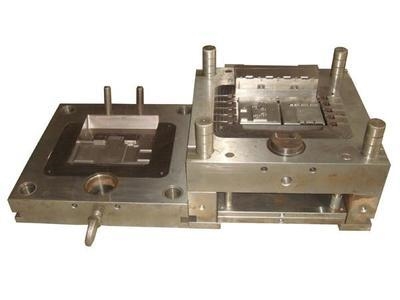How to explain the welding phenomenon in aluminum alloy die casting mould?
[China Aluminum Network] In all of the major causes of failure of aluminum alloy die casting mold, the problem of welding on the mold surface has gradually become of concern. "Weld" is a term used in the die-casting industry and refers to the reaction between a die and a die-cast alloy. Once welding occurs on the mold surface, a complex Fe-Al intermetallic compound phase is generated and defects are created on the surface of the casting during the next die casting cycle. Hard intermetallic phases also accumulate on the surface of the mold, so production must be interrupted and the weld products removed by polishing. This leads to extended production time, wasted labor, and reduced tool life. According to the different welding patterns, "welding" can be divided into two types. The former type of welding is referred to as "impact welding", i.e., welding occurs at the entrance of the mold surface toward the entrance of the cavity or at the runner. These areas are generally subjected to the violent impact of molten metal flow during filling. The surface temperature is high, the pressure is high, the protective layer is easily destroyed, and the protective layer of the mold fails and the metal substrate is exposed under the continuous flushing of the die casting alloy. The alloy reacts with the matrix material to form a complex intermetallic phase. The intermetallic compound is hard and not easily deformed. Its cracking in the die casting will not only lead to defects in the quality of the casting, but also will take away the substrate material and expose the fresh surface. As a result, the welding phenomenon gradually deepens, and the mold surface will be seriously affected. Corrosion and mold material loss. Therefore, it is necessary to remove and repair the damaged surface in a timely manner in the early stage of welding. The second form of welding is called "sedimentation welding," ie, the welding position is either back to the gate or away from the runner. These areas are usually where surface treatment or mold lubricants cannot reach. Therefore, their surface conditions, temperature distribution, and pressure conditions are different from those in other places. Usually die-casting alloys reach lower temperatures after reaching these areas, their fluidity also deteriorates, and they tend to solidify earlier. The contact time between the hot semi-solid alloy and the mold surface becomes longer, and the surface state of the mold itself is not ideal. It is easy to form FeAl intermetallic compounds. During multiple die-casting cycles, intermetallic compounds will gradually deposit in these poorly flowing regions, forming a severe weld later, affecting die-casting production. Although different forms of welding occur in different areas of the aluminum alloy die casting mold, the resulting welding has some common features in common - that is, the surface of the mold surface is generally silver-white luster. The composition of the weld layer is often a complex Fe-Al intermetallic compound, and due to the thinness of the intermetallic compounds that make up the layer, there are also certain difficulties in the analysis. However, foreign researchers ZWChen and DTFraser used X-ray diffraction to analyze the intermetallic compounds formed by dipping H13 steel in a molten Al-11Si-3Cu die-cast aluminum alloy. They believed that the weld layer was composed of composite layer metal. The intermetallic compound αbcc-(FeSiAlCrMnCu), the hexagonal αH-(Fe2SiAl8) intermetallic compound of the outer compact layer, and the intercalation compound of the inner layer of the rhombohedral η-Fe2Al5 intermetallic compound. The Fe-Al interface microstructure photographed by them was very similar to the Fe-Al interface morphology obtained by the author's experiment of “dipping H13 steel in ADC12 die-cast aluminum alloyâ€. The amount of intermetallic compounds is very small, the surface layer of the weld is very thin, and the analysis method is limited. At the present stage, researchers at home and abroad can only conduct a general qualitative analysis. For the formation and development of the weld layer, quantitative analysis of intermetallic compounds will be the focus of future researchers. Octagonal Ring Joint Gasket,Octagonal Ring Gasket,Octagonal Rtj Gasket,Octagonal Ring Joint WENZHOU JINGWEI SEAL TECHNOLOGY CO., LTD , https://www.ringjoint-gasket.com